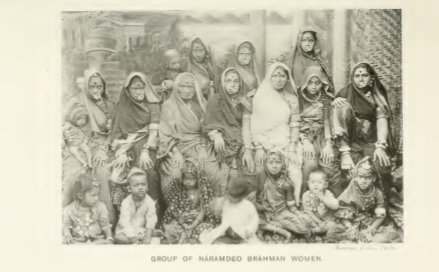Brahman: Sanadhya, Sanaurhia
Sanadhya Brahman
(From People of India/ National Series Volume VIII. Readers who wish to share additional information/ photographs may please send them as messages to the Facebook community, Indpaedia.com. All information used will be gratefully acknowledged in your name.)
Titles: Maharaj, Pandit [Madhya Pradesh and/or Chhattisgarh]
Surnames: Budholia, Dhimote, Dikshit, Norolia, Ojha, Pachori, Parasar, Pathak, Saraiya, Tignath, Tinguriya, Tiwari [Madhya Pradesh and/or Chhattisgarh]
Gotra: Agnihotri, Bharadwaj, Kashyap, Parasar, Sandilya, Vasishistha, Viswamitra [Madhya Pradesh and/or Chhattisgarh]
Brahman: Sanadhya, Sanaurhia
This section was written in 1916 when conditions were different. Even in Readers will be able to edit existing articles and post new articles directly |
From The Tribes And Castes Of The Central Provinces Of India
By R. V. Russell
Of The Indian Civil Service
Superintendent Of Ethnography, Central Provinces
Assisted By Rai Bahadur Hira Lal, Extra Assistant Commissioner
Macmillan And Co., Limited, London, 1916.
NOTE 1: The 'Central Provinces' have since been renamed Madhya Pradesh.
NOTE 2: While reading please keep in mind that all articles in this series have been scanned from the original book. Therefore, footnotes have got inserted into the main text of the article, interrupting the flow. Readers who spot these footnotes gone astray might like to shift them to their correct place.
The Sanadhyas are considered in the Central Provinces to be a branch of the Kanaujia division. Their home is in the Ganges-Jumna Doab and Rohilkhand, between the Gaur Brahmans to the north-
west and the Kanaujias to the east. Mr. Crooke states that in some localities the Sanadhyas intermarry with both the Kanaujia and Gaur divisions. But formerly both Kanaujias and Gaurs practised hypergamy with the Sanadhyas, taking daughters from them in marriage but not giving their
daughters to them.
This fact indicates the inferiority of the Sanadhya group, but marriage is now becoming reciprocal. In Bengal the Sanadhyas account for their inferiority to the other Kanaujias by saying that their ancestors on one occasion at the bidding of a Raja partook of a sacrificial feast with all their clothes on, instead of only their loin- cloths according to the rule among Brahmans, and were hence degraded. The Sanadhyas themselves have two divisions, the Sdrhe-tln ghar and Dasghar, or Three-and-a- half houses and Ten houses, of whom the former are superior, and practise hypergamy with the latter. Further, it is said that the Three-and-a-half group were once made to inter- marry with the degraded Kataha or Maha-Brahmans, who are funeral priests.
This further indicates the inferior status of the Sanadhyas. The Sanaurhia criminal caste of pickpockets are supposed to be made up of a nucleus of Sanadhya Brahmans with recruits from all other castes, but this is not certain. In the Central Provinces a number of Sanadhyas took to carrying grain and merchandise on pack -bullocks, and are hence known as Belwar. They form a separate subcaste, ranking below the other Sanadhyas and marrying among themselves. Mr. Crooke notes that at their weddings the Sanadhyas worship a potter's wheel. Some make an image of it on the wall of the house, while ' Tribes and Castes, art. Sanadhya. 2 Crooke, ibidem, paras. 3 and 6.
others go to the potter's house and worship his wheel there. In the Central Provinces after the wedding they get a bed newly made with netvdr tape and seat the bride and bridegroom on it, and put a large plate at their feet, in which presents are placed. The Sanadhyas differ from the Kanaujias in that they smoke tobacco but do not eat meat, while the Kanaujias eat meat but do not smoke. They greet each other with the word Dandawat, adding Maharaj to an equal or superior.
